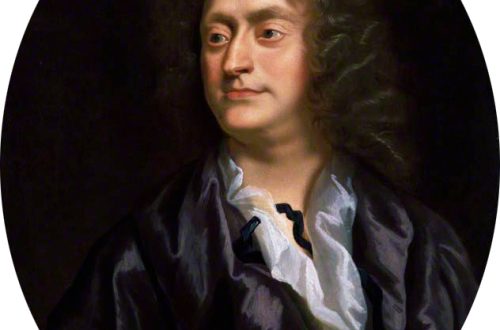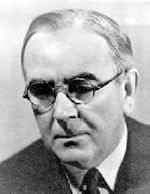
Joseph Haydn |
Joseph Haydn
This is real music! This is what should be enjoyed, this is what should be sucked in by everyone who wants to cultivate a healthy musical feeling, a healthy taste. A. Serov
The creative path of J. Haydn – the great Austrian composer, senior contemporary of W. A. Mozart and L. Beethoven – lasted about fifty years, crossed the historical border of the 1760th-XNUMXth centuries, covered all stages of the development of the Viennese classical school – from its inception in XNUMX -s. until the heyday of Beethoven’s work at the beginning of the new century. The intensity of the creative process, the richness of imagination, the freshness of perception, the harmonious and integral sense of life were preserved in Haydn’s art until the very last years of his life.
The son of a carriage maker, Haydn discovered a rare musical ability. At the age of six, he moved to Hainburg, sang in the church choir, learned to play the violin and harpsichord, and from 1740 he lived in Vienna, where he served as a chorister in the chapel of St. Stephen’s Cathedral (Vienna Cathedral). However, in the choir only the boy’s voice was valued – a rare treble purity, they entrusted him with the performance of solo parts; and the composer’s inclinations awakened in childhood went unnoticed. When the voice began to break, Haydn was forced to leave the chapel. The first years of independent life in Vienna were especially difficult – he was in poverty, starved, wandered without a permanent shelter; only occasionally did they manage to find private lessons or play the violin in a traveling ensemble. However, despite the vicissitudes of fate, Haydn retained both an open character, a sense of humor that never betrayed him, and the seriousness of his professional aspirations – he studies the clavier work of F. E. Bach, independently studies counterpoint, gets acquainted with the works of the largest German theorists, takes composition lessons from N. Porpora, a famous Italian opera composer and teacher.
In 1759, Haydn received the place of Kapellmeister from Count I. Mortsin. The first instrumental works (symphonies, quartets, clavier sonatas) were written for his court chapel. When in 1761 Mortsin disbanded the chapel, Haydn signed a contract with P. Esterhazy, the richest Hungarian magnate and patron of the arts. The duties of the vice-kapellmeister, and after 5 years of the princely chief-kapellmeister, included not only composing music. Haydn had to conduct rehearsals, keep order in the chapel, be responsible for the safety of notes and instruments, etc. All Haydn’s works were the property of Esterhazy; the composer did not have the right to write music commissioned by other persons, he could not freely leave the prince’s possessions. (Haydn lived on Esterhazy’s estates – Eisenstadt and Estergaz, occasionally visiting Vienna.)
However, many advantages and, above all, the ability to dispose of an excellent orchestra that performed all the works of the composer, as well as relative material and domestic security, persuaded Haydn to accept Esterhazy’s proposal. For almost 30 years, Haydn remained in court service. In the humiliating position of a princely servant, he retained his dignity, inner independence and striving for continuous creative improvement. Living far from the world, with almost no contact with the wide musical world, he became the greatest master of European scale during his service with Esterhazy. Haydn’s works were successfully performed in major musical capitals.
So, in the mid-1780s. the French public got acquainted with six symphonies, called “Paris”. Over time, composites became more and more burdened by their dependent position, more acutely felt loneliness.
Dramatic, disturbing moods are painted in minor symphonies – “Funeral”, “Suffering”, “Farewell”. Many reasons for different interpretations – autobiographical, humorous, lyric-philosophical – were given by the finale of “Farewell” – during this endlessly lasting Adagio, the musicians leave the orchestra one by one, until two violinists remain on the stage, finishing the melody, quiet and gentle …
However, a harmonious and clear view of the world always dominates both in Haydn’s music and in his sense of life. Haydn found sources of joy everywhere – in nature, in the life of peasants, in his work, in communication with loved ones. So, acquaintance with Mozart, who arrived in Vienna in 1781, grew into a real friendship. These relations, based on deep inner kinship, understanding and mutual respect, had a beneficial effect on the creative development of both composers.
In 1790, A. Esterhazy, heir to the deceased Prince P. Esterhazy, dissolved the chapel. Haydn, who was completely freed from service and retained only the title of Kapellmeister, began to receive a lifetime pension in accordance with the will of the old prince. Soon there was an opportunity to fulfill an old dream – to travel outside of Austria. In the 1790s Haydn made two tours to London (1791-92, 1794-95). The 12 “London” symphonies written on this occasion completed the development of this genre in the work of Haydn, approved the maturity of the Viennese classical symphony (a little earlier, in the late 1780s, Mozart’s last 3 symphonies appeared) and remained the pinnacle of phenomena in the history of symphonic music. The London symphonies were performed in unusual and extremely attractive conditions for the composer. Accustomed to the more closed atmosphere of the court salon, Haydn first performed in public concerts, felt the reaction of a typical democratic audience. At his disposal were large orchestras, similar in composition to modern symphony ones. The English public was enthusiastic about Haydn’s music. At Oxford, he was awarded the title of Doctor of Music. Under the influence of the oratorios of G. F. Handel heard in London, 2 secular oratorios were created – The Creation of the World (1798) and The Seasons (1801). These monumental, epic-philosophical works, affirming the classical ideals of beauty and harmony of life, the unity of man and nature, adequately crowned the composer’s creative path.
The last years of Haydn’s life were spent in Vienna and its suburb Gumpendorf. The composer was still cheerful, sociable, objective and friendly towards people, he still worked hard. Haydn passed away at a troubled time, in the midst of the Napoleonic campaigns, when the French troops had already occupied the capital of Austria. During the siege of Vienna, Haydn consoled his loved ones: “Do not be afraid, children, where Haydn is, nothing bad can happen.”
Haydn left a huge creative heritage – about 1000 works in all genres and forms that existed in the music of that time (symphonies, sonatas, chamber ensembles, concertos, operas, oratorios, masses, songs, etc.). Large cyclic forms (104 symphonies, 83 quartets, 52 clavier sonatas) constitute the main, most precious part of the composer’s work, determine his historical place. P. Tchaikovsky wrote about the exceptional significance of Haydn’s works in the evolution of instrumental music: “Haydn immortalized himself, if not by inventing, then by improving that excellent, perfectly balanced form of the sonata and symphony, which Mozart and Beethoven later brought to the last degree of completeness and beauty.”
The symphony in Haydn’s work has come a long way: from early samples close to the genres of everyday and chamber music (serenade, divertissement, quartet), to the “Paris” and “London” symphonies, in which the classical laws of the genre were established (the ratio and order of the parts of the cycle – sonata Allegro, slow movement, minuet, quick finale), characteristic types of thematics and development techniques, etc. Haydn’s symphony acquires the meaning of a generalized “picture of the world”, in which different aspects of life – serious, dramatic, lyrical-philosophical, humorous – brought to unity and balance. The rich and complex world of Haydn’s symphonies possesses remarkable qualities of openness, sociability, and focus on the listener. The main source of their musical language is genre-everyday, song and dance intonations, sometimes directly borrowed from folklore sources. Included in the complex process of symphonic development, they discover new figurative, dynamic possibilities. Completed, perfectly balanced and logically built forms of parts of the symphonic cycle (sonata, variation, rondo, etc.) include elements of improvisation, remarkable deviations and surprises sharpen interest in the very process of thought development, always fascinating, full of events. Haydn’s favorite “surprises” and “pranks” helped the perception of the most serious genre of instrumental music, gave rise to specific associations among listeners, which were fixed in the names of symphonies (“Bear”, “Chicken”, “Clock”, “Hunt”, “School teacher”, etc. . P.). Forming the typical patterns of the genre, Haydn also reveals the richness of the possibilities for their manifestation, outlining different paths for the evolution of the symphony in the 1790th-XNUMXth centuries. In Haydn’s mature symphonies, the classical composition of the orchestra is established, including all groups of instruments (strings, woodwinds, brass, percussion). The composition of the quartet is also stabilizing, in which all instruments (two violins, viola, cello) become full members of the ensemble. Of great interest are Haydn’s clavier sonatas, in which the composer’s imagination, truly inexhaustible, each time opens up new options for building a cycle, original ways of arranging and developing the material. The last sonatas written in the XNUMXs. are clearly focused on the expressive possibilities of a new instrument – the pianoforte.
All his life, art was for Haydn the main support and a constant source of inner harmony, peace of mind and health, He hoped that it would remain so for future listeners. “There are so few joyful and contented people in this world,” wrote the seventy-year-old composer, “everywhere they are haunted by grief and worries; perhaps your work will sometimes serve as a source from which a person full of worries and burdened with business will draw his peace and rest for minutes.
I. Okhalova
Haydn’s operatic heritage is extensive (24 operas). And, although the composer does not reach Mozart’s heights in his operatic work, a number of works of this genre are very significant and have not lost their relevance. Of these, the most famous are Armida (1784), The Soul of a Philosopher, or Orpheus and Eurydice (1791, staged in 1951, Florence); the comic operas The Singer (1767, by Estergaz, renewed in 1939), The Apothecary (1768); Deceived Infidelity (1773, Estergaz), Lunar Peace (1777), Loyalty Rewarded (1780, Estergaz), the heroic-comic opera Roland the Paladin (1782, Estergaz). Some of these operas, after a rather long period of oblivion, were staged with great success in our time (for example, Lunar Peace in 1959 in The Hague, Loyalty Rewarded in 1979 at the Glyndebourne Festival). A true enthusiast of Haydn’s work is the American conductor Dorati, who recorded 8 operas by the composer with the Lausanne chamber orchestra. Among them is Armida (soloists Norman, K. X. Anshe, N. Burroughs, Ramy, Philips).
E. Tsodokov





